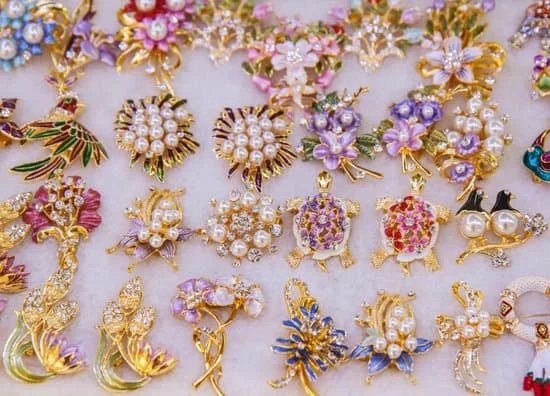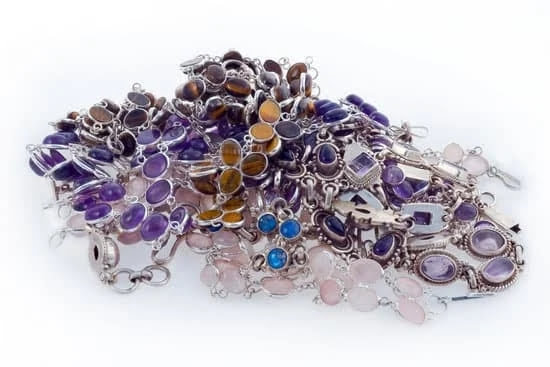Introduction
Having your jewelry appraised for insurance can be a valuable process, as it can help you in the event of a loss or theft. When you get your jewelry appraised, a professional will evaluate your jewelry and will provide an estimate of its value. This is important because if you ever need to make an insurance claim, it’s good practice to have the appraisal information available at hand. An appraisal can often dictate how much you are allowed to receive from your policy if something happens to your jewelry.
Furthermore, having an up-to-date appraisal on your pieces of jewelry is incredibly advantageous when looking for ways to potentially upgrade or expand upon your fine jewelry collection– as it serves as a baseline for determining actual retail replacement values and other details about what you own.
To get started with getting apparel that meets insurance standards, you’ll need to find an appraiser with knowledge in the fields of gemology and/or metalwork. It’s generally recommended that experts come “certified” by the Gemological Institute of America (GIA), American Gem Society Laboratories (AGSL), or any other reputable organization such as International Gemological Institute (IGI) before being hired. Once that hurdle is cleared, make sure to confirm they have experience in valuing similar items like yours so they can understand their full value and potential worth in different markets. You must also be certain that they have liability insurance in case there are any issues with their work later down the line. After providing all necessary paperwork/documentation, photos, details etc., then comes the waiting period while they assess each piece individually and formulate their estimate accordingly.
Different Types of Jewelry Appraisals
When it comes to getting jewelry appraised for insurance, there are three main types of appraisal available: auctions, retail appraisals, and certified appraisers. It is important to understand the difference between the various types of appraisals before deciding which one is best for you.
Auctions typically involve a group of individuals bidding on auctioned jewelry, with the highest bidder winning the piece. This type of appraisal method is often used when selling collectible pieces or designer jewelry. While this type of appraisal will not provide detailed grading on the item’s condition, or gemological information like cut and grade, it can give you a fair market value estimate of your jewelry.
Retail appraisals are general evaluations of what a “typical” person would be willing to pay for an item as if they purchased it from a store. When visiting your local jeweler for a retail appraisal, make sure to get an estimate for at least two years of coverage in case something does happen and your item requires repair or replacement during that time frame.
Finally, certified appraisers are specially trained individuals who specialize in assessing the value and condition of items such as fine art, antiques and jewelry. These experts have specialized degrees and certifications in their area of expertise which allow them to authenticate items based on their experience. Certified appraisers are ideal for providing more specialized reports that include estimates based on current market values and documented research. Additionally, they can also pinpoint areas where damage may occur in the future as well as identify factors that could affect its value over time (e.g., manufacturing flaws).
Benefits of Regularly Getting Jewelry Appraised
Regularly getting jewelry appraised is important for several reasons. Firstly, an appraisal should be obtained any time a piece of jewelry is purchased. This will provide an accurate value of the item and documentation of this value in case of insurance claims.
Aside from when the item is purchased, it is generally recommended that jewelry should be appraised every two to three years or before a change in insurance coverage. During this process, a professional will evaluate the item and provide an updated value for the piece based on its condition and market trends. This will ensure that your jewelry is appropriately covered by your insurance policy in case it needs to be replaced due to loss or damage.
Getting jewelry regularly appraised also benefits owners by helping them plan for any future repairs or alterations that may need to be done. By obtaining an appraisal with each inspection, it allows individuals to accurately judge how much money to budget for upcoming projects and necessary maintenance of the piece over time.
The Appraisal Process
Choosing An Appraiser: Finding a qualified jewelry appraiser for insurance purposes is essential. One of the best ways to find a reputable appraiser is by asking friends, family members and coworkers for recommendations. Once you have some potential names, it’s important to do some research into their qualifications – make sure that they are accredited and experienced in evaluating jewelry. Additionally, inquire about how long it will take to receive an appraisal report and cost estimates if applicable.
What To Expect During Appraisal: The jewelry appraisal process usually takes place over the course of two visits. During the first visit, the appraiser will examine the item or items to determine metal content, gemstone quality, size and any additional information needed to estimate replacement value. Additionally they might describe or photograph the item or items depending on its condition. On the second visit, you’ll be presented with an overview of findings and a verbal opinion as to estimated replacement value of your item/items according to current market values along with copies of photos taken during the first visit.
Preparing For Appraisals: Before having your jewelry appraised for insurance purposes, there are some steps you should take: gather any original paperwork related to your item(s) including receipts; research any past accounts from repair work conducted by jewelers; locate any other related documents such as diamond grading reports; bring two recent copies of identification; take some photos or video footage ahead of time that can be used for reference during evaluation (including images from different angles).
Cost of an Appraisal
When considering the cost of a jewelry appraisal for insurance purposes, there are several factors to consider. Firstly, considerations must be made regarding the size and complexity of the piece; larger, more intricate pieces typically require more time and effort from an appraiser to accurately assess and therefore can cost more in terms of fees. Additionally, if any gems are integral components of the piece, their complexities affect both the physical evaluation and subsequent writing stage – likewise with antiques or handcrafted pieces, as each requires additional research during assessment. An appraiser may also charge a fee for photographs taken that serve as proof positive evidence when finalizing your appraisal report. Furthermore, if an lab analysis is required due to a gem or metal not being easily identifiable by sight or touch alone – this will incur additional expense too. Finally, other factors to consider include apprasier’s qualifications, experience and professionalism (each comes with certain associated costs) plus geographical location; jewelry appraisal pricing can vary from region to region making it essential to compare costs prior to deciding upon which appraiser you go with. Ultimately though, paying for professional expertise should give you peace of mind that your valuables have been properly examined and their value insurance stated accordingly.
Preparing for Your Appraisal
Before your visit to the appraiser, take the time to prepare for your appointment. Interested purchasers should ask about their experience and qualifications, such as their accreditation, and ensure they have references. Take pictures of each piece of jewelry before taking them to be assessed, this will give you a chance to go over the notes with the appraiser and compare them during the appraisal. Additionally, make sure to inquire whether a certified replacement cost evaluation is included in the service so you can accurately gauge how much it would cost if your item was stolen or damaged. You may also want to ask if any extra fees apply for multiple items being appraised together as well as what forms or detail is included in the written report for insurance purposes. Finally, ensuring that an agreed timeline for delivery of reports is established at the start will help streamline the process.
After the Appraisal
Once you receive the appraisal, make sure all of the details and estimated values match your expectations. If you have any unanswered questions or discrepancies, contact your appraiser right away.
Next, make sure that you keep the appraisal secure, such as in a safety deposit box or other secure storage area. Consider making a digital copy of it for extra security and to share with your insurance provider.
Then, contact an independent insurance company to obtain jewelry insurance coverage. Provide them with a copy of your appraisal to prove the value of your jewelry and ensure that you will be adequately covered in the event of loss or theft. Make sure that when pursuing a policy, it covers “Replacement Value” for lost items so that you can obtain similar pieces at today’s prices if necessary. Also ask about any special offers or discounts for securing multiple items in one policy.
Finally, keep receipts on hand in order to provide an additional layer of protection if needed in the event of an insurance claim. Updates to appraisals should occur every few years as prices change and craftsmanship progresses over time as well as routinely when an item is professionally cleaned and inspected by a reputable jeweler.
Conclusion
Getting a piece of jewelry appraised for insurance before submitting a claim is an essential step that should not be overlooked. Knowing the details and value of your jewelry is important when making any insurance-related decisions. The process starts by selecting a reputable appraiser. It’s best to find an unbiased professional who has experience in the type of jewelry you own, as they will be able to give you the most accurate evaluation. After finding the right appraiser, have them properly evaluate each piece of insurance separately or have them do a thorough appraisal on your entire collection if necessary. When all evaluation is complete, ask for a written report detailing the appraised values along with relevant images and descriptions of your pieces. Submit this report with your claim paperwork to ensure that your jewelry is correctly valued and can be adequately covered in case anything happens to it. Jewelry appraisal for insurance purposes may seem like a laborious task but it’s well worth it in order to make sure you’re covered in the event of loss or theft.

Welcome to my jewelry blog! My name is Sarah and I am the owner of this blog.
I love making jewelry and sharing my creations with others.
So whether you’re someone who loves wearing jewelry yourself or simply enjoys learning about it, be sure to check out my blog for insightful posts on everything related to this exciting topic!





